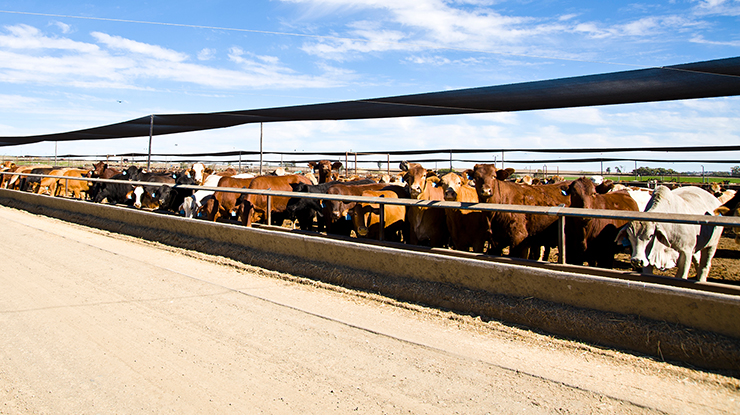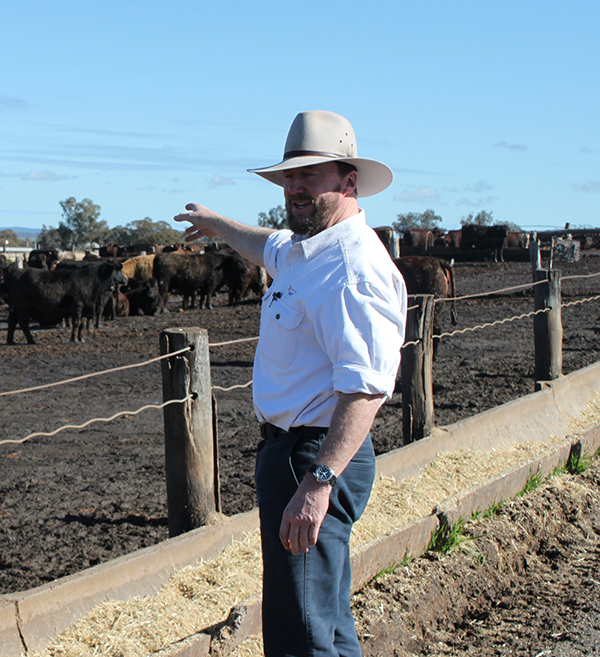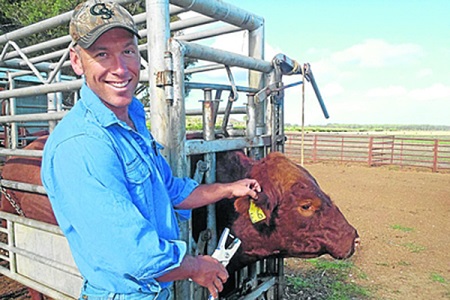How to prepare your cattle for feedlot entry
02 August 2023

Failing to properly prepare cattle for feedlot entry can result not only in animal loss, but also financial loss to producers.
Here, Dr Enoch Bergmann from Swans Veterinary Services and Dr Paul Cusack from Australian Livestock Production Services, share the six items to check off your list before feedlot entry.
Six steps
The key steps to preparing your cattle for the feedlot include:
- yard weaning calves
- castrating males
- vaccinating against bovine respiratory disease (BRD) and infectious bovine rhinotracheitis (IBR)
- treating stock for worms
- ensuring negative pregnancy tests for females
- familiarising stock with feed bunks and troughs.
Stress and the immune system
Disease isn’t the only factor which can suppress immune system function and cause a severe impact to cattle productivity in feedlots.
Other stressors which can contribute to immunosuppression if cattle are unprepared include:
- weaning
- transport
- processing
- bunk transition
- acclimatisation to people
- competition for food
- feed trucks
- pen mates.

Dr Paul Cusack from Australian Livestock Production Services.
Paul said minimising the stress levels of cattle prior to and during entry is essential to reducing mortality rates.
“It’s important your cattle are prepared for the environment they’re about to enter, so extending yard weaning time plays a big role in ensuring your livestock will be used to sharing a space with people, pen mates and trucks,” he said.
“Additionally, if cattle have not previously been trained to eat concentrate feeds from feed bunks, it’s going to take them longer to achieve stable intake which allows for positive energy and protein balance. These are essential for a well-functioning immune system.”
Enoch said young cattle which have undergone nutritional stress in calfhood, or suffered failure of passive transfer due to inadequate consumption of colostrum, are often much more susceptible to the common stresses associated with transitioning from the paddock to the feedlot.
“Calves suffering failure of passive transfer have been shown to be three times more likely to develop respiratory disease at the feedlot,” Enoch said.

Dr Enoch Bergmann from Swans Veterinary Services.
Risk of financial loss
“Good welfare outcomes equate to good performance, which in turn equates to good profitability,” Paul said.
Enoch recently worked with a producer whose experience supports this view.
“One of my best lot-feeding producers agreed to track both the morbidity and mortality of calves purchased through the saleyard (less likely to have been yard weaned or vaccinated) to those procured direct from producers,” Enoch said.
“Remarkably, amongst those purchased through the saleyard, morbidity was six times worse (11.6% versus 1.6%) and mortality was seven times worse (2.5% versus 0.4%).
“Those that do a poor job preparing animals for the feedlot end up hurting the sale price of every animal sold into the lot feeding sector, as the lot feeder must discount enough calves to cover their losses.
“If we all work together, we can prevent a significant proportion of the production losses suffered at feedlots and we can all financially benefit from the proceeds.”


